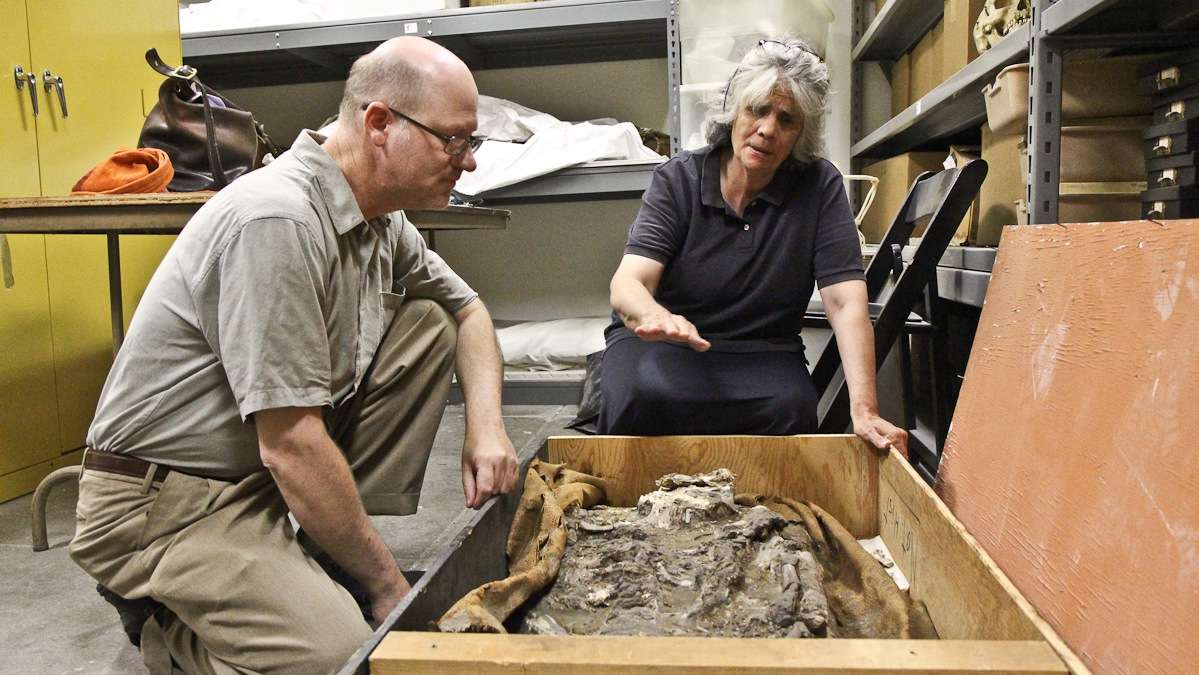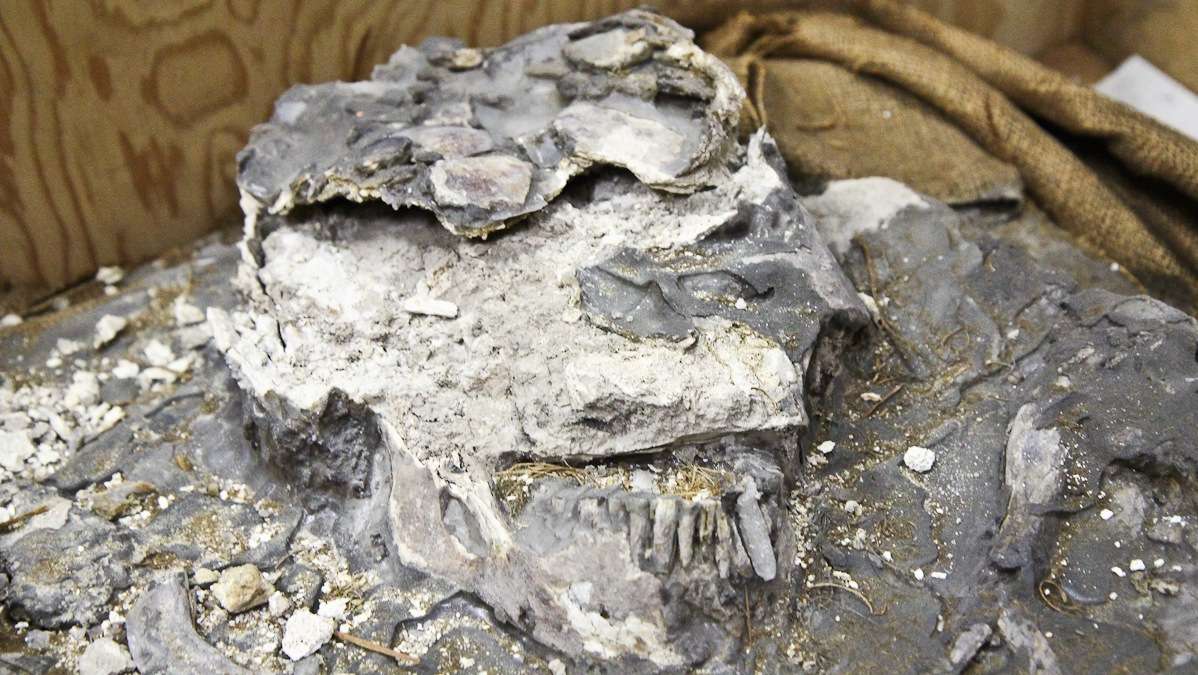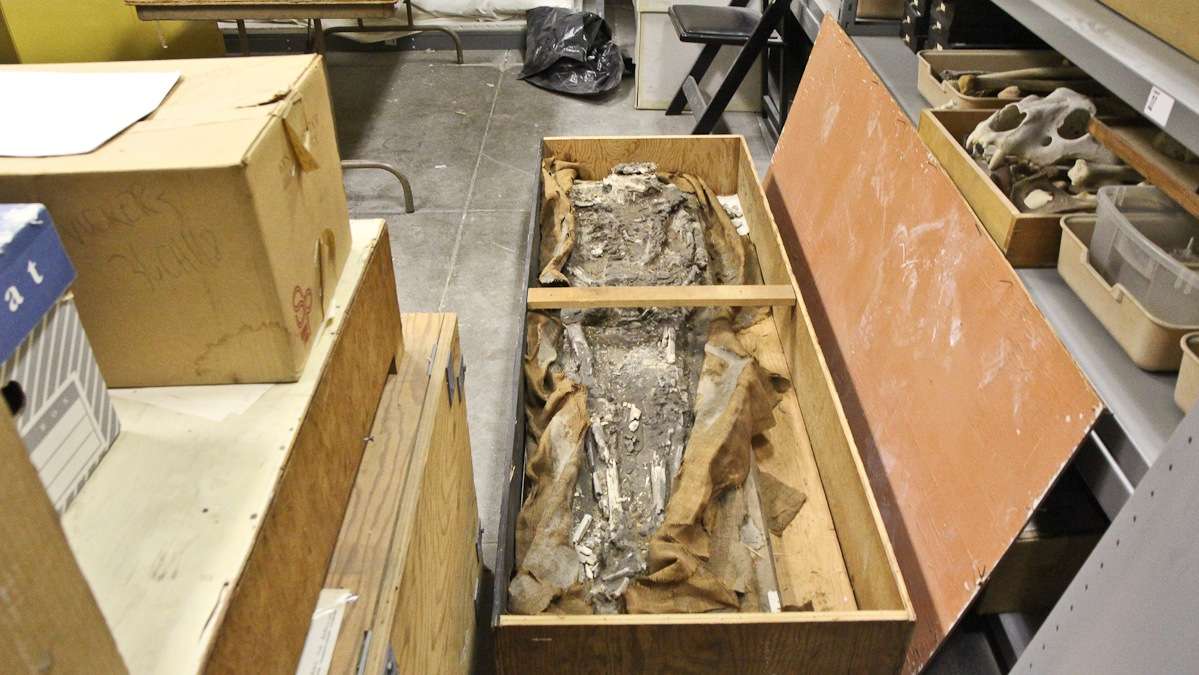6,500-year-old skeleton gets its history back at Penn Museum
ListenPhiladelphia’s Penn Museum announced this week it discovered the skeleton in its basement. But how did they lose it in the first place?
The Penn Museum in West Philadelphia announced this week it discovered a 6,500-year-old skeleton in its basement. Which begged the obvious question: How did they lose it in the first place? And what do they do with it now that they’ve found it?
Turns out, the Penn Museum didn’t exactly lose the skeleton. For decades, keeper of physical anthropology and associate curator Janet Monge knew that it was in her storage room, packed in a coffin-sized wooden crate and stored on a shelf underneath a box of leg bones and a giant bear skull.
“Periodically I’ve made that mental note, you know, we need to figure out what’s going on with this specimen,” Monge said.
The skeleton is laid out on its back, hands crossed over the pelvis. The lower jaw and teeth are well-preserved, and the whole skeleton is covered in a congealed mass of wax and dirt. The identification documents, noting the skeleton’s age and where it was found, were missing. So Monge left the skeleton alone.
“A skeleton without provenience is meaningless,” Monge said, noting remains can’t be properly analyzed when separated from their context.
The skeleton remained unidentified until this spring, when museum colleague William Hafford mentioned records he had found for a mysterious missing skeleton while working to digitize archives.
“I almost immediately, based on his description and then looking at the photos, identified it as this person, this unidentified person,” Monge said.
The skeleton belonged to a man around 50 years old, standing between five foot eight and five foot ten. It was unearthed by Sir Leonard Woolley between 1929 and 1930 at the site of Ur, in present-day southern Iraq.
“(Woolley) dug a very deep pit and he found 48 burials, and this is the only one that he says was in good enough shape (to excavate), about 50 feet below the surface of the site,” Hafford said.
Monge and Hafford used photos of Woolley from the famous dig to match the skeleton to its records.
“You can see him heating wax in the photos, and he’s dribbling it across, helping to infuse the dirt around the bones, to hold them in place,” Hafford said. “And then he cuts underneath and slides a board in, so he can pull the whole body out rather than just trying to collect bones, because they weren’t in very good condition.”
Bad timing contributed to the skeleton, which is extremely rare for the time period and place it was recovered, being separated from its identifying papers since it arrived at the museum 85 years ago.
“It came in during the Great Depression, and we did not have many people working, that’s part of the problem,” Hafford said, “so if you’re not recording well because you don’t have enough people to record, it’s possible that the numbers were on pieces of paper that got lost somehow.”
Monge said they cannot remove the wax covering the bones to run some typical tests, but they can CT scan the skeleton to create a 3-D model.
“Rather than actually sort of physically trying to take it out of this conglomerate mass,” Monge said, “we’ll virtually extract the individual pieces and put it back together again.”
Even basic pelvic bone analysis to determine gender is more advanced than the techniques Woolley would have used in the 1930s.
“He would tend to say if they were buried with weapons they were male, and if they were buried with jewelry they were female, and this is not absolutely true at all,” Hafford said.
Hafford says reuniting the important skeleton with its papers felt like giving him his history back.
WHYY is your source for fact-based, in-depth journalism and information. As a nonprofit organization, we rely on financial support from readers like you. Please give today.






